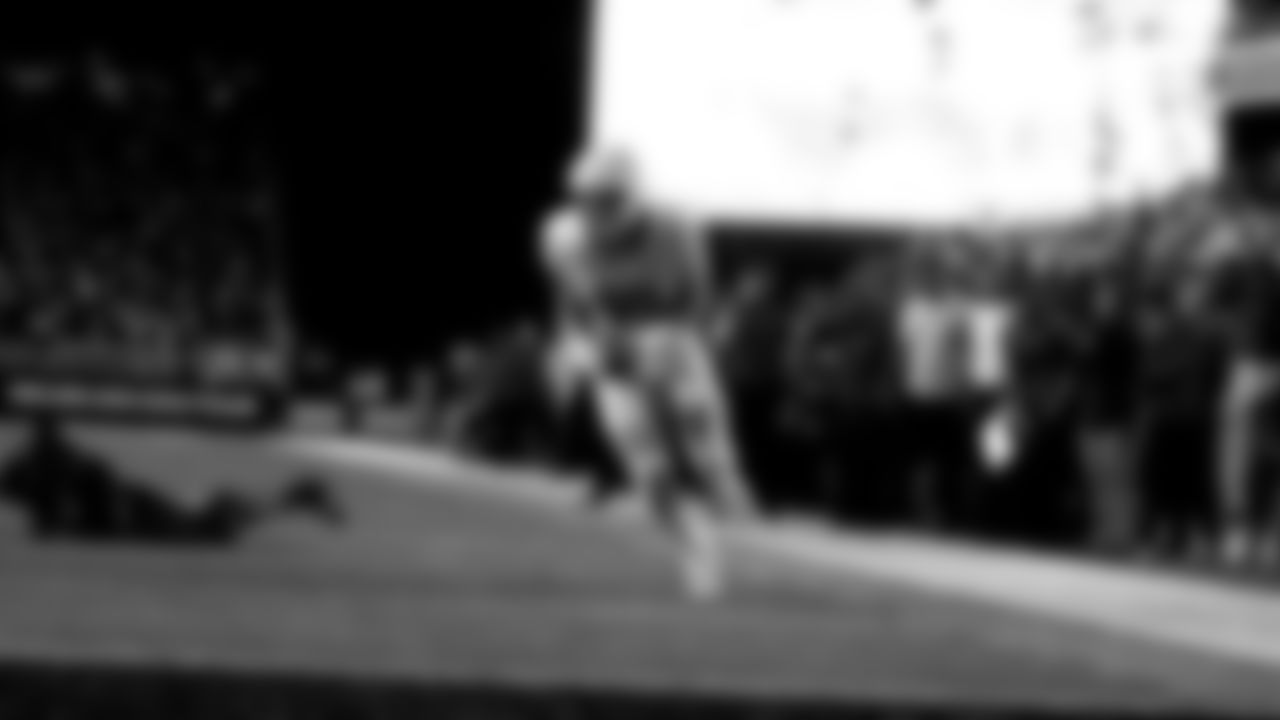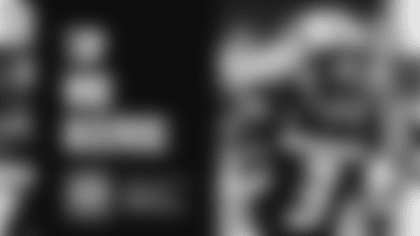One of the most recognized names in the industry, Rob Rang is an NFL Draft analyst for FOX Sports. Rob has been covering the NFL Draft for more than 20 years, with work at FOX, Sports Illustrated, CBSSports.com, USA Today, Yahoo, NFL.com and NFLDraftScout.com, among others. He also works as a scout with the BC Lions of the Canadian Football League. Rang's opinions and evaluations are his own and do not reflect those of the Seahawks. Follow him on Twitter @RobRang.
From players to coaches, everyone involved with the Seattle Seahawks offense in 2022 should be able to just take a collective bow.
After an offseason of heavy scrutiny following the trade of star quarterback Russell Wilson, the Seahawks' top decisionmakers saw enough in veteran Geno Smith to name him the starter late in the preseason following a spirited battle throughout training camp with Drew Lock. Smith earned that trust, blossoming into one of the NFL's best in 2022, leading the league in completion percentage (69.8%) and finishing third in passing touchdowns (30) while helping a Seattle team starting two rookie offensive tackles finish in the top 10 in the NFL in scoring.
It was an offense that featured a pair of receivers in DK Metcalf and Tyler Lockett who each generated over 1,000 receiving yards, just the third time in franchise history that's happened. Seattle's creative usage and alignment of their three-headed monster of Will Dissly, Noah Fant and Colby Parkinson at tight end had rival defensive coordinators scrambling. And how about the sensational debut from running back Ken Walker III – the rightful owner of the most first-place votes in this year's Offensive Rookie of the Year (a contest technically won by New York Jets wide receiver Garrett Wilson because he had more total votes).
The reality is, the 2022 campaign was a pretty magical year. If the Seahawks hope to venture deeper into the playoffs, however, they'll need to be even better – including on offense.
It was no coincidence that the Kansas City Chiefs and Philadelphia Eagles squared off in the Super Bowl. They also happened to be the two teams who scored the most points in the NFL last year.
Seattle's offense was good in 2022. I believe it could be much better immediately – and in the long-term, as well – by taking advantage of this year's class of explosive playmakers and pro-ready interior linemen.
No team with as many as 10 draft picks – like the Seahawks currently own – is going to focus solely on one side of the ball, but we thought it would be fun to project one fit from the offensive side of the ball Seattle might be targeting, with trade-downs not allowed. Next week, we'll do the same exercise with defensive players only.
With really only one position on offense worthy of a Top 5 pick in this draft, that makes things interesting immediately.
First Round, No. 5 overall – Anthony Richardson, QB, Florida
Drafting a quarterback here might be perceived by many as a form of disrespect to the recently signed Smith and Lock—though Smith himself has said he would be supportive of a rookie quarterback—but that does not keep it from arguably being the best long-term move for the Seahawks. I see three quarterbacks in this class as being worthy of the No. 5 overall selection – Alabama's Bryce Young, Ohio State's C.J. Stroud and Richardson. The expectation is that Young and Stroud will be off the board within the first three picks, at most. While that means some awfully good defensive players would still be on the board, if Carroll and Schneider view Richardson as potential MVP-caliber talent – as I do – they will smartly use this "unique opportunity" to invest in the future.
Truly bigger, stronger and faster, Richardson is a remarkable talent with the biggest knock on him being inexperience and inaccuracy. With just 13 career starts, there isn't much to argue on the experience front, though, he's reportedly impressed NFL teams during interviews with his understanding of the intricacies of Florida's offense, both this past year's scheme with first-year Florida head coach Billy Napier and the one run by Dan Mullen, whose staff recruited Richardson.
When it comes to Richardson's inaccuracy, the statistics – 24/15 touchdown-to-interception ratio and a career completion percentage of just 54.7% – are undeniably ugly. They also happen to be pretty misleading, with drops by teammates significantly bloating the stat-book, as well as an extremely run-heavy offense incorporated by Napier and his staff minimizing opportunities. Richardson's numbers look better, too, when one adds the 12 scores on the ground he had… in, again, just 13 starts.
Whether he winds up in Seattle or elsewhere, I believe Richardson's value is expanded given the NFL's decision to allow the "rugby scrum" short-yardage formations used so effectively by the Philadelphia Eagles and their star quarterback Jalen Hurts a year ago. Even on a team like Seattle, with an established starter at quarterback, Richardson offers immediate impact potential on sub-packages where he would be featured as a runner along with Ken Walker III, offering quite a conundrum for defenses.
Meanwhile, he could be learning the game from the sideline, taking the same "redshirt" year that future MVPs Aaron Rodgers and Patrick Mahomes enjoyed while acclimating to the pro game, themselves.
First Round, No. 20 overall – Zay Flowers, WR, Boston College
With the possible exception of improved interior line play (more on that later), generating more big plays after the catch has to be one of the real top priorities for the Seahawks, who saw minimal production from its receivers outside of Metcalf and Lockett. The only other receiver to catch a touchdown for this club a year ago was veteran Marquise Goodwin, who is currently a free agent though he reportedly has agreed to terms with Cleveland. The No. 20 overall selection is a fun spot in the draft to project a receiver, as it's possible none of them have been selected yet, giving the team their pick of the litter. Flowers, USC's Jordan Addison and Ohio State's Jaxon Smith-Njigba would all fit in so well in Seattle. I expect the Seahawks to draft at least one receiver and perhaps more given their need for playmakers and the abundance of them in this draft, although many – like the 5-foot-9, 182 pound Flowers – lack ideal size. But those aren't the numbers to focus on with Flowers. It is 31, as in the number of touchdowns he's scored despite inconsistent quarterback play and terrific competition in the ACC. Go ahead, look up the term "playmaker" on Dictionary.com, Flowers picture should populate. He is a super-charged dynamo who can star from the slot or the outside.
Second Round, No. 37 overall – Zach Charbonnet, RB, UCLA
The Seahawks have invested premium selections in running backs even when their depth chart appears stacked and that certainly is not the case at the moment with Rashaad Penny and Travis Homer each signing deals elsewhere this offseason. Walker looked every bit the part of a workhorse a year ago and the Seahawks love what DeeJay Dallas provides but the club currently lacks the bigger, bruising back Carroll has always prioritized. The 6-0, 222-pound Charbonnet offers speed and power, scoring 40 touchdowns over a college career spent grinding under former NFL head coaches Chip Kelly at UCLA and Jim Harbaugh at Michigan.
Second Round, No. 52 overall – Sam LaPorta, TE, Iowa
I'm fascinated to see if the Seahawks take advantage of one of the best tight end classes to come down the pike in my 20-plus years of scouting. With Fant and Parkinson entering the final years of their respective deals and Dissly again recovering from an injury, Seattle may want to take the same long-term approach at this position as I projected earlier at quarterback. There are several tight ends in this class with similar body types and skillsets as what Seattle currently has and perhaps that is the direction they'll go. Shorter and quicker, LaPorta is more of a complement than a replacement, offering more of an H-back role with a game that could translate similarly to the 49ers' Kyle Juszczyk.
Third Round, No. 83 overall – Steve Avila, C/OG, TCU
As noted previously, I believe addressing the interior of the offensive line should be one of Seattle's top priorities in this draft and frankly, if I believed there was a future Hall of Fame center in this class, I'd argue he should be their pick at No. 5 overall. In reality, interior linemen simply aren't that prioritized with Seattle likely to be able to find a plug and play starter on Day Two. I see several quality fits for Seattle in this class but few who match up as perfectly as Avila, who boasts a terrific blend of size, power, and agility, has starting experience at both guard and center and dominated at the Senior Bowl.
Fourth Round, No. 123 overall – Braeden Daniels, OL, Utah
While the encouraging play from rookies Charles Cross and Abe Lucas a year ago suggests that Seattle does not need to invest an early pick in an offensive tackle, the team won't pass up the chance to develop more young talent at the position, especially should a player slip to a point of extreme value. After not surrendering a single sack at left tackle a year ago for the Utes, Daniels should be a Top 100 pick but good depth at tackle this year and questions about where the 6-foot-4, 294-pound fits best in the NFL could push him down the board slightly. Perhaps anticipating this, the Seahawks recently hosted Daniels on a 30 visit. He left Utah with 43 career starts distributed over the left tackle, right tackle and left guard positions.
Fifth Round, No. 151 overall – Andrew Vorhees, OG, USC
The Seahawks investing three consecutive selections on offensive linemen is probably about as realistic as the club dedicating all 10 of its draft picks on offense, but Vorhees is a name to remember for a lot of reasons. First and most simply, he's really good, being voted the Morris Trophy winner this year as the best offensive lineman in the conference. He's also likely to fall on draft day due to the fact that he suffered a torn ACL at the Combine, all but erasing his rookie season. The 5th round is typically when teams start gambling on character or durability concerns. With the extra picks in this exercise to invest in the future, I'm stashing away this future starter right now.
Fifth Round, No. 154 overall – Deuce Vaughn, RB, Kansas State
At just 5-foot-5 and 179 pounds, Vaughn is a virtual doppelganger of former Kansas State and pro star Darren Sproles (5-foot-6, 187 pounds), who retired in 2019 after a 15-year NFL career as a three-time Pro Bowler, ranking fifth in NFL history with nearly 20,000 all-purpose yards. Regardless of the competition, Vaughn posted similar video game-like numbers at Kansas State, leaving early for the NFL with a staggering 3,604 rushing yards and 43 total touchdowns over three seasons. Like Sproles, Vaughn is cat-quick, balanced through contact and possessing soft, reliable hands which make him a playmaker as a receiver and, theoretically, as a returner.
Sixth Round, No. 198 overall – Michael Wilson, WR, Stanford
There were encouraging signs from last year's seventh round pick Dareke Young, but he joins Metcalf as currently the only other receiver over six-foot on Seattle's roster with a single NFL catch. Wilson, of course, does not possess that either, but he does offer a legitimate NFL skill-set, wowing scouts at the Senior Bowl with his easy releases, sharp routes and snappy grabs, with the 6-2, 213 pounder bouncing off would-be tacklers. The problem is, prior to his stellar showing in Mobile, Wilson has been absolutely snake-bitten by injuries at Stanford. Based strictly on the film prior to the Senior Bowl, I gave Wilson a Top 100 grade – one of the few earned by senior wideouts across the country. The medicals probably will push him deep into Day Three. With so many picks, I'm willing to throw a dart or two at a player who I think will ultimately be better in the pros than he was in college.
Seventh Round, No. 237 overall – Zack Kuntz, TE, Old Dominion
The Seahawks typically spend their last picks on explosive athletes, hoping to catch lighting in a bottle. This was the case a year ago, for example, with Young, a flashy athlete from Lenoir-Rhyne who was not invited to the Combine but wowed scouts at his Pro Day by running a 4.44-second 40-yard dash and a 11'3" broad jump at 224 pounds. Kuntz, who began his college career at Penn State, was invited to the Combine despite catching just 12 passes this past season. A 40" vertical jump and 6.87-second time in the 3cone speak to the unique explosiveness and change of direction owned by the 6-foot-7, 255 pounder, who caught 73 passes for 692 yards and five scores the year before at Old Dominion. Given the way that Parkinson has developed in Seattle's weight room over the past few seasons, the Seahawks may see Kuntz as an inexpensive opportunity to hit the reset button.
Draft analyst Rob Rang provides a fit on offense to fit each of the Seahawks' 10 draft picks.

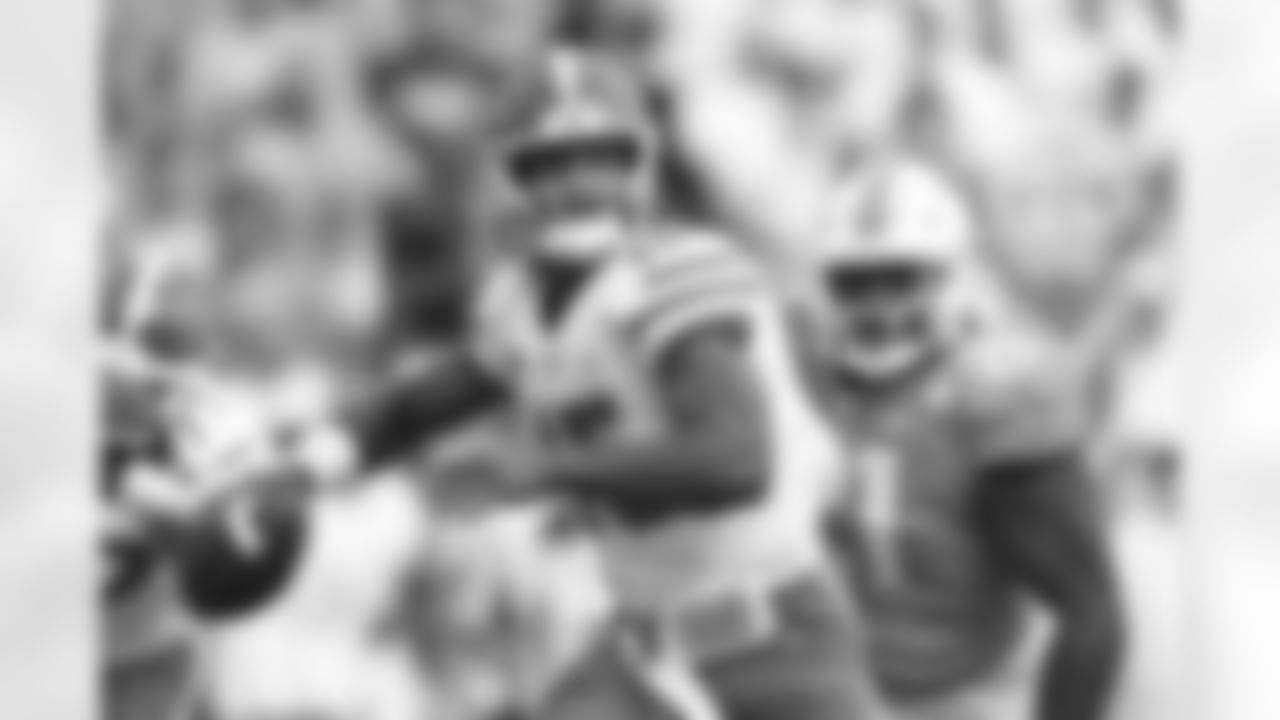
Florida quarterback Anthony Richardson (15) throws to a receiver during the first half of an NCAA college football game against Tennessee, Saturday, Sept. 24, 2022, in Knoxville, Tenn. (AP Photo/Wade Payne)
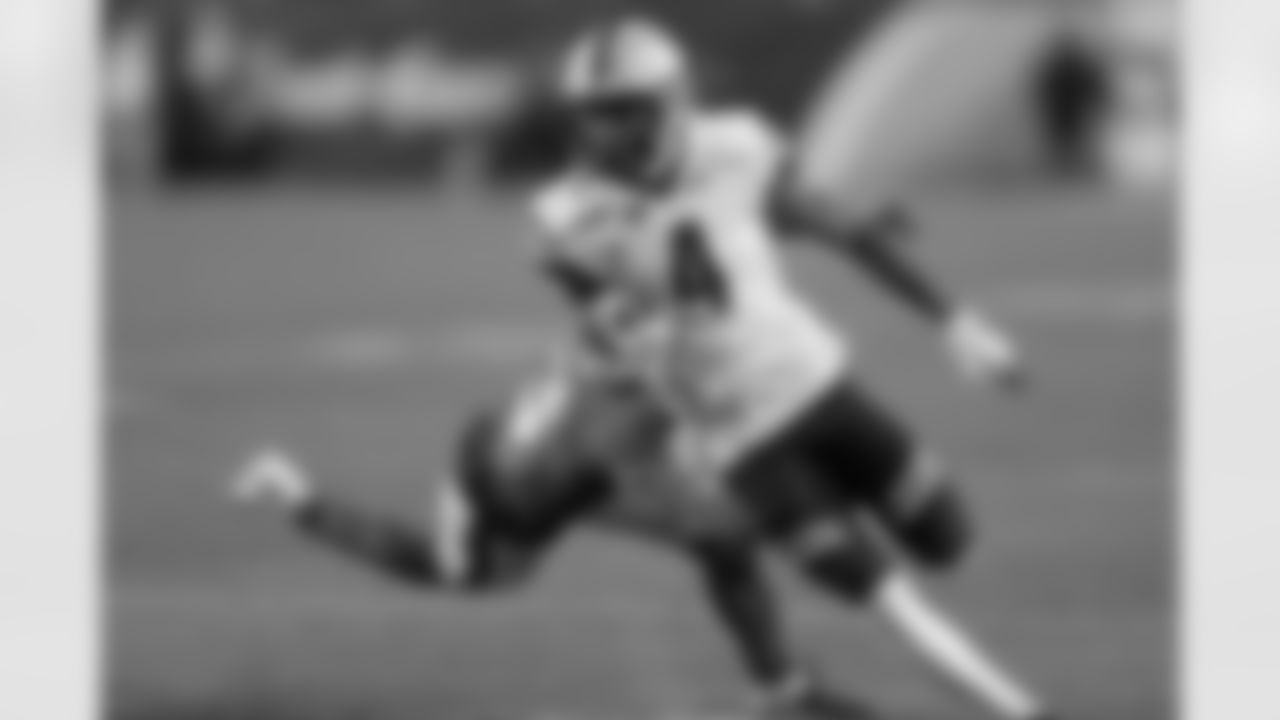
Boston College wide receiver Zay Flowers (4) runs with the ball against Pittsburgh during the second half of an NCAA college football game, Saturday, Nov. 30, 2019, in Pittsburgh. Boston College won 26-19. (AP Photo/Keith Srakocic)
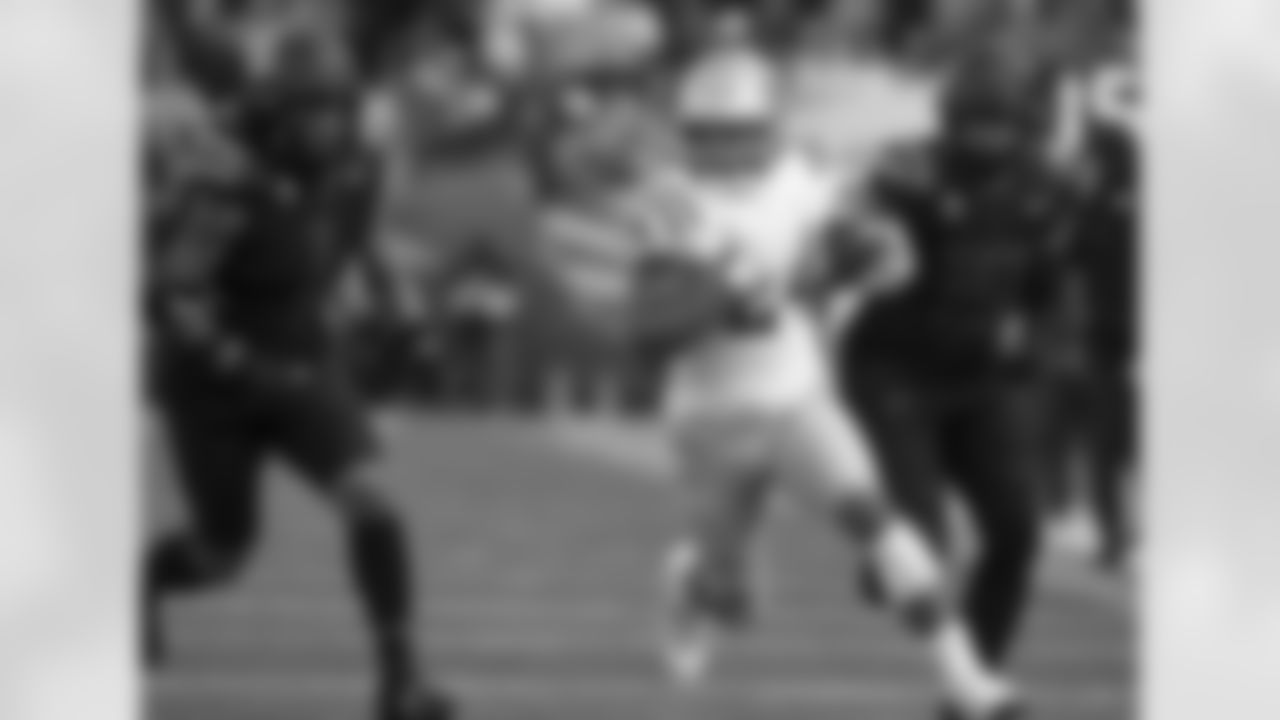
UCLA's Zach Charbonnet, center, out runs Oregon's Noah Sewell, left, and Mase Funa, right, during the second half in an NCAA college football game Saturday, Oct. 22, 2022, in Eugene, Ore. (AP Photo/Chris Pietsch)

Iowa's Sam LaPorta (84) reaches for a pass under pressure from Nebraska's Luke Reimer (28) in the end zone during the first half of an NCAA college football game Friday, Nov. 26, 2021, at Memorial Stadium in Lincoln, Neb. Initially called a touchdown, the call was reversed after review.(AP Photo/Rebecca S. Gratz)
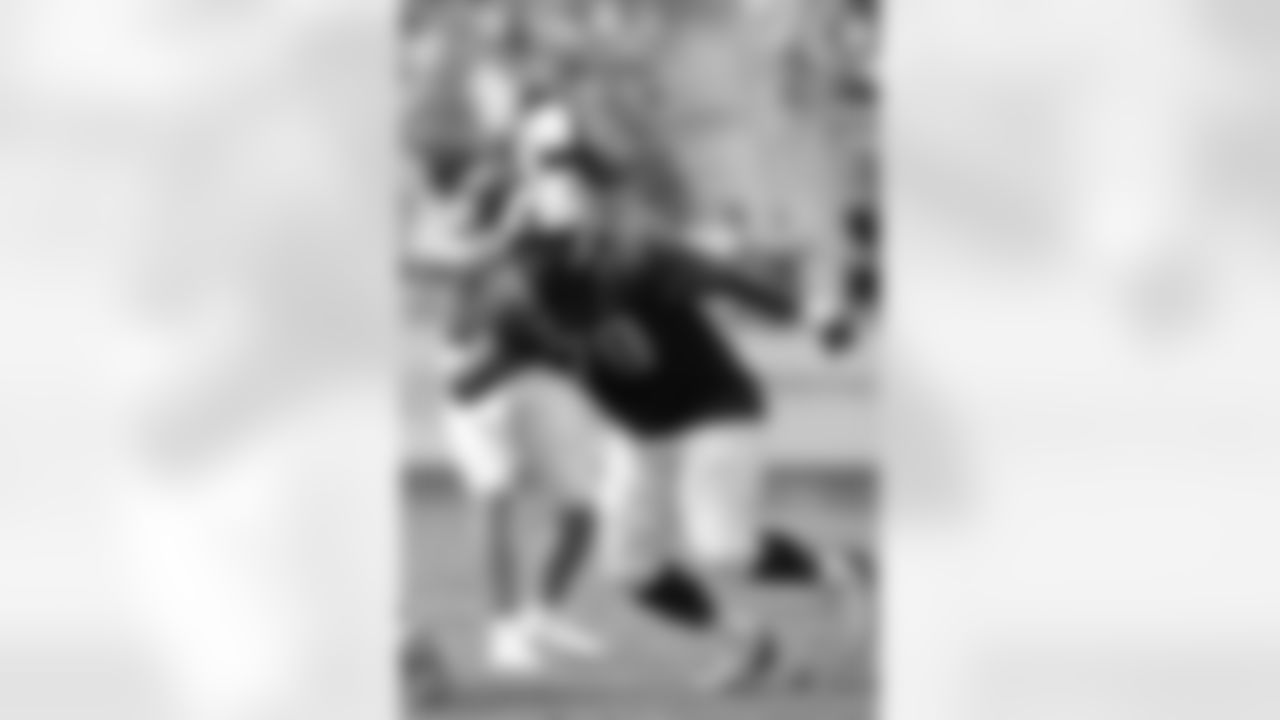
TCU center Steve Avila (79) defends at the line of scrimmage during an NCAA college football game against California in Fort Worth, Texas, Saturday, Sept. 11, 2021. (AP Photo/Tony Gutierrez)
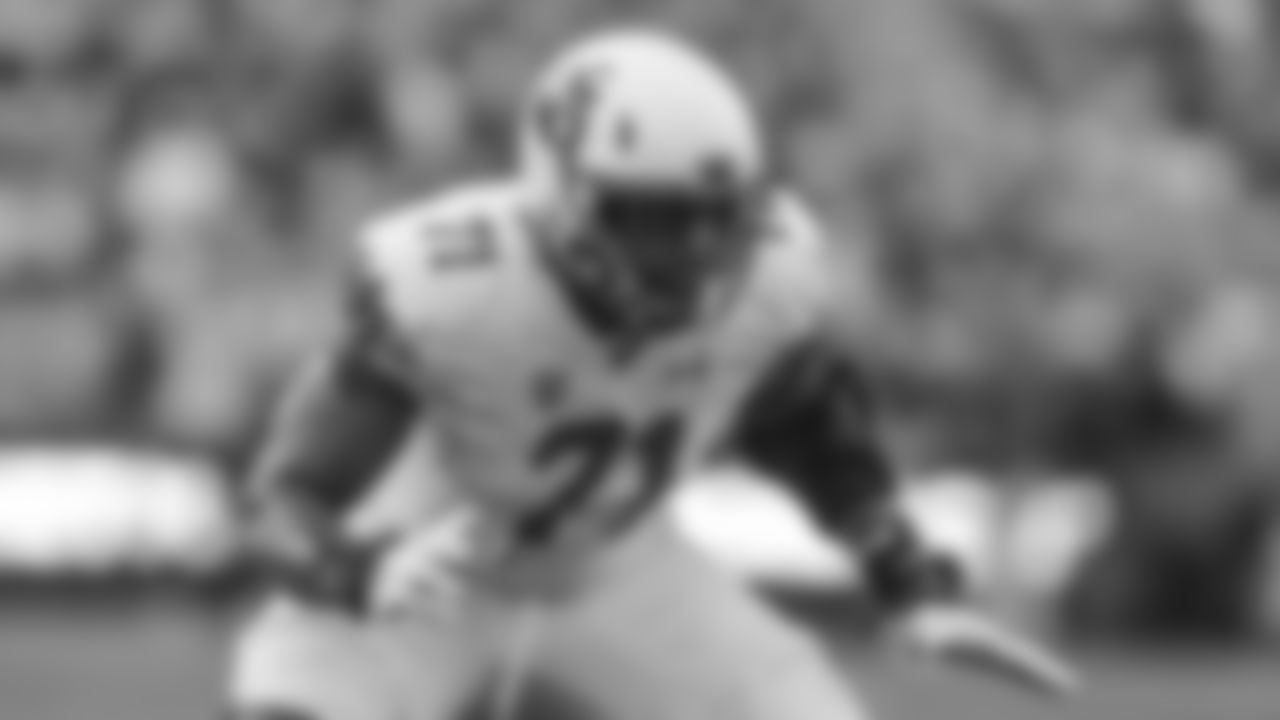
Utah offensive lineman Braeden Daniels (71) sets to block during an NCAA football game against Florida on Saturday, Sept. 3, 2022 in Gainesville, Fla. Florida defeated Utah 29-26. (AP Photo/Gary McCullough)
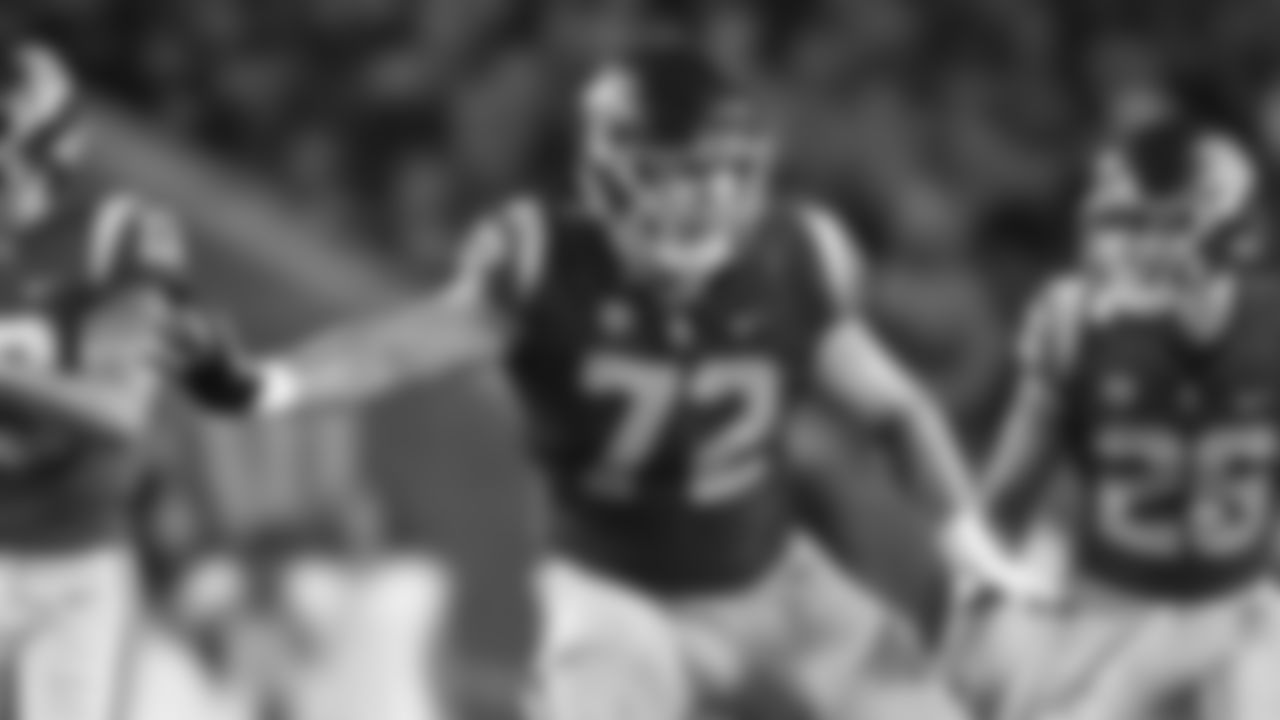
Southern California offensive lineman Andrew Vorhees (72) while playing Fresno State during an NCAA softball game on Saturday, Sept 17, 2022 in Los Angeles. (AP Photo/John McCoy)
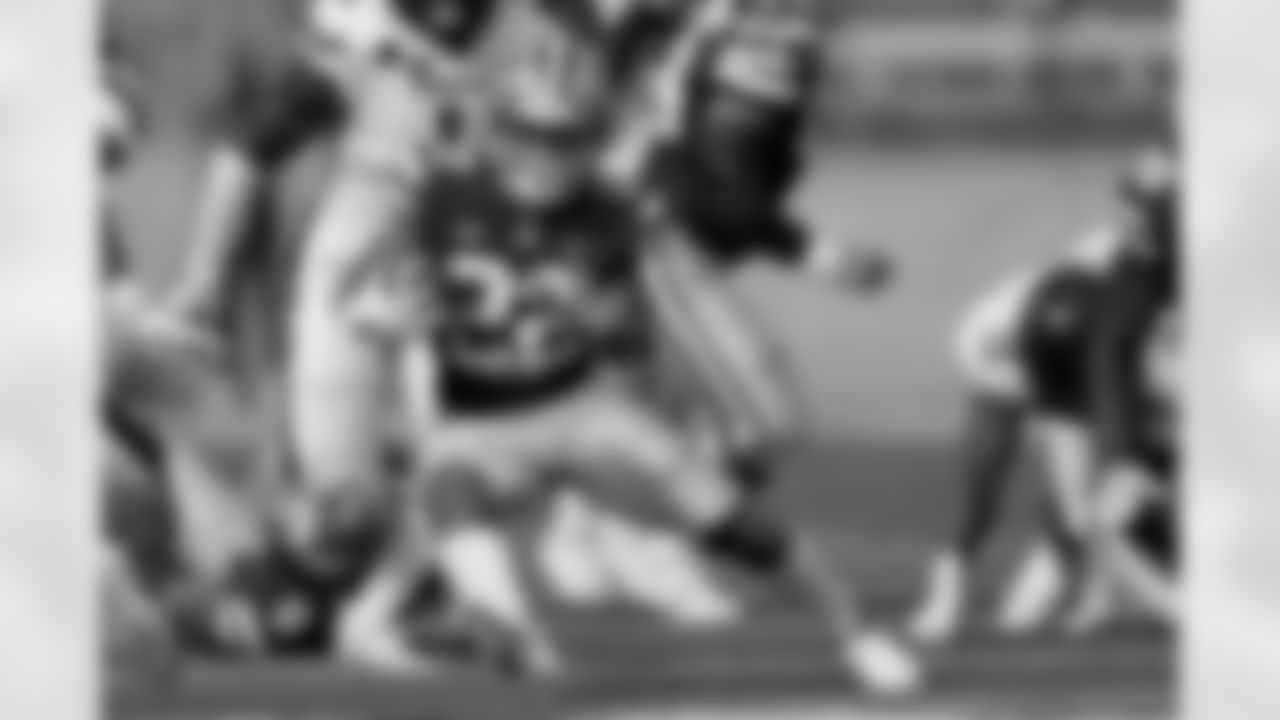
FILE - In this Oct. 3, 2020, file photo, Kansas State running back Deuce Vaughn runs for a first down during the first half of the team's NCAA college football game against Texas Tech in Manhattan, Kan. Vaughn is the only Big 12 player to lead his team in rushing and receiving, and is one of only two players nationally with at least 300 yards rushing and 300 yards receiving. (AP Photo/Charlie Riedel, File)
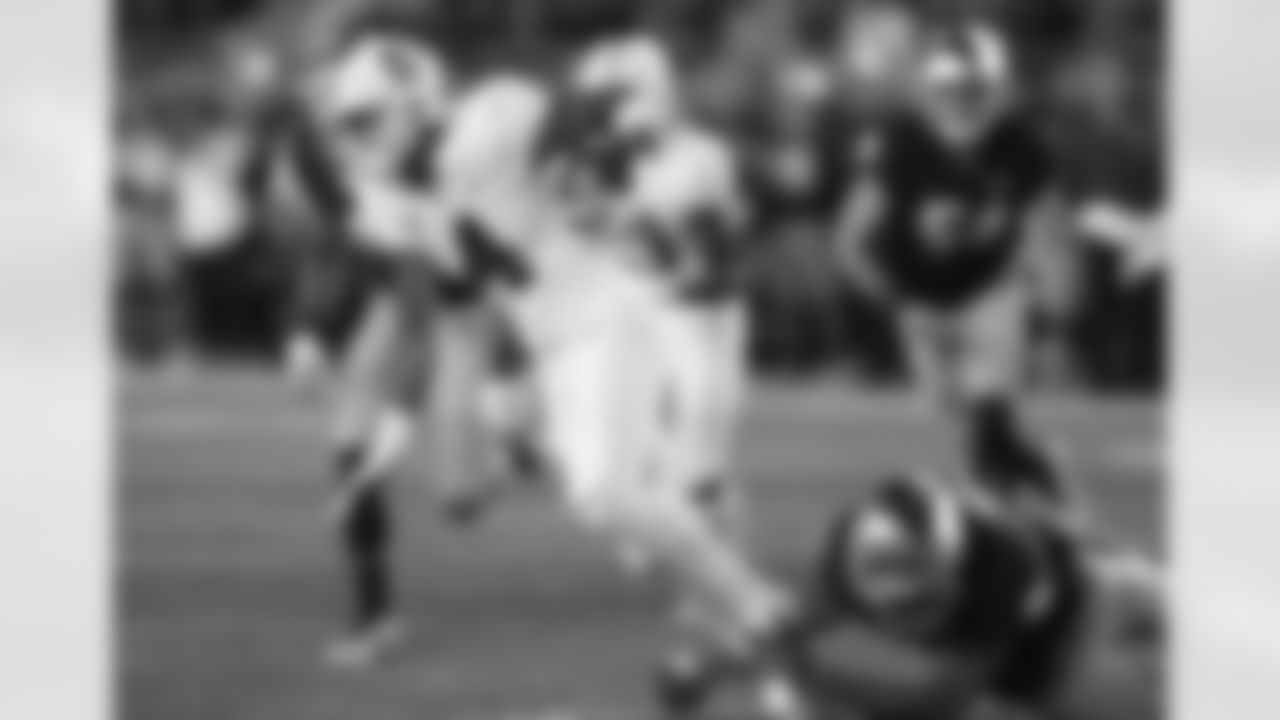
Stanford wide receiver Michael Wilson (4) is taken down by Notre Dame's Chase Claypool during the second half of an NCAA college football game Saturday, Sept. 29, 2018, in South Bend, Ind. (AP Photo/Carlos Osorio)
